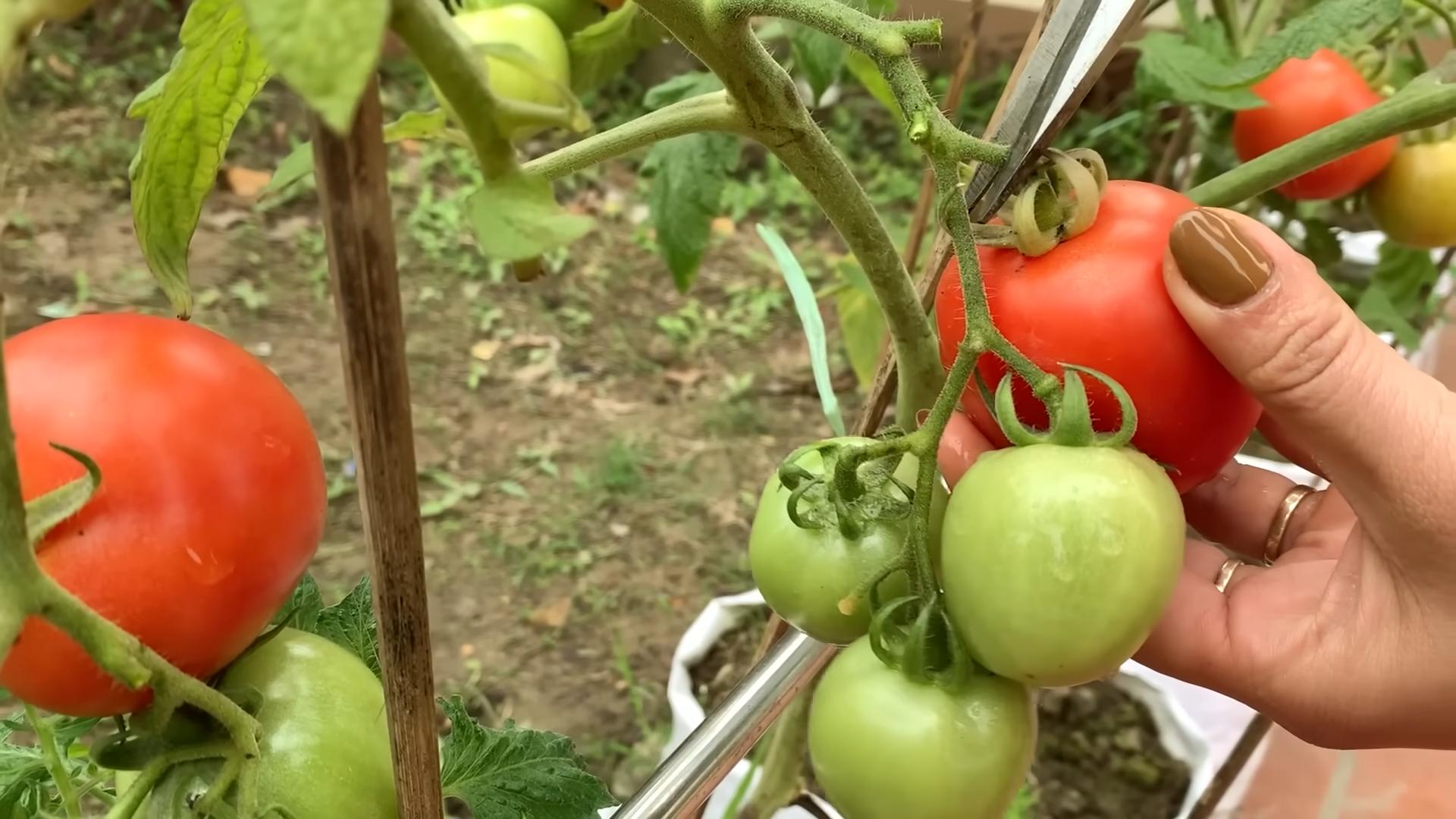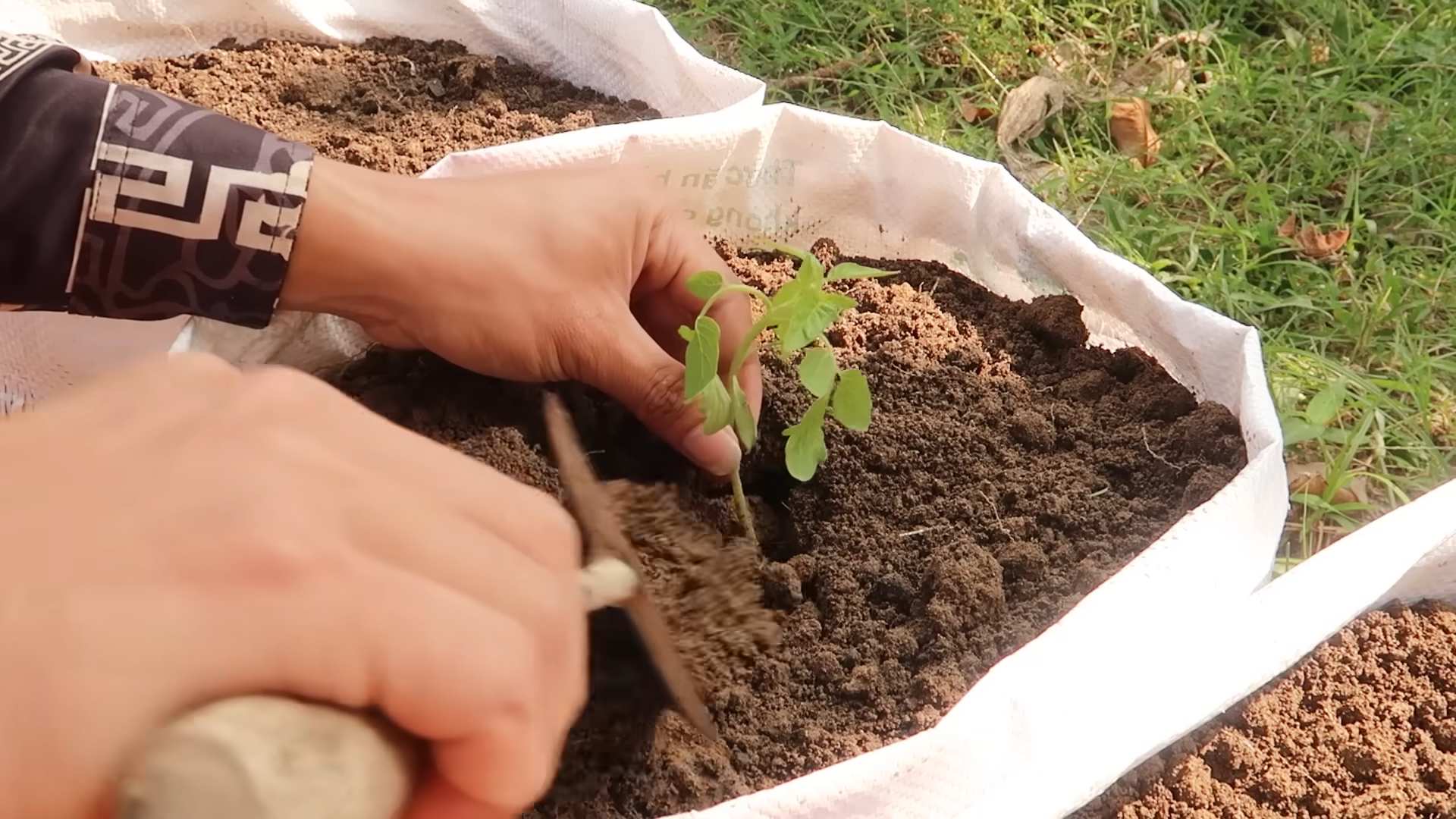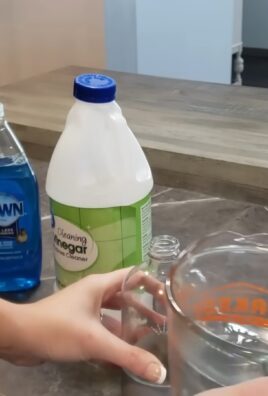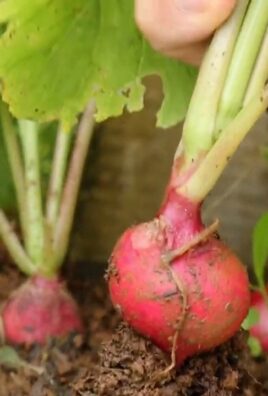Growing Tomatoes Indoors might seem like a summer dream confined to sprawling gardens, but guess what? It’s totally achievable, even if you’re short on space or sunshine! For centuries, humans have cultivated food in controlled environments, from ancient Roman greenhouses to the ingenious floating gardens of the Aztecs. This DIY guide isn’t just about bringing the taste of summer into your home; it’s about connecting with that age-old tradition of nurturing life and enjoying the fruits (or, in this case, vegetables!) of your labor.
Let’s be honest, who *doesn’t* crave a juicy, sun-ripened tomato in the dead of winter? Store-bought tomatoes often lack that vibrant flavor, and that’s where the magic of growing tomatoes indoors comes in. I’m going to show you simple, effective tricks and hacks that will transform your windowsill, balcony, or even a spare corner into a thriving tomato haven. Imagine plucking fresh, flavorful tomatoes right from your own indoor garden – perfect for salads, sauces, or just a delicious snack. This guide will empower you to bypass bland supermarket produce and enjoy the taste of homegrown goodness all year round. So, grab your gardening gloves, and let’s get started!

Growing Tomatoes Indoors: A Beginner’s Guide to Bountiful Harvests
Hey there, fellow gardening enthusiasts! Ever dreamt of enjoying fresh, juicy tomatoes even when the weather outside is frightful? Well, dream no more! Growing tomatoes indoors is totally achievable, and I’m here to walk you through every step of the process. It might seem daunting at first, but trust me, with a little patience and the right setup, you’ll be harvesting delicious homegrown tomatoes in no time.
Choosing the Right Tomato Variety
Not all tomato varieties are created equal, especially when it comes to indoor growing. We need to pick varieties that are compact, early-maturing, and well-suited for container gardening. Here are a few of my favorites:
* ‘Tiny Tim’: As the name suggests, these are super compact and perfect for small spaces. They produce adorable, bite-sized tomatoes.
* ‘Roma’: A classic choice for sauces and pastes, ‘Roma’ tomatoes are relatively compact and productive.
* ‘Patio’: Bred specifically for container gardening, ‘Patio’ tomatoes are known for their bushy growth habit and abundant yields.
* ‘Tumbling Tom’: These are trailing varieties that look fantastic in hanging baskets and produce sweet, cherry-sized tomatoes.
* ‘Better Bush’: A determinate variety that stays relatively compact and produces medium-sized tomatoes.
Gathering Your Supplies
Before we dive into the planting process, let’s make sure we have everything we need. Here’s a checklist of essential supplies:
* Tomato Seeds: Choose your desired variety from the list above or explore other compact, early-maturing options.
* Seed Starting Trays or Small Pots: These will be used to germinate the seeds.
* Seed Starting Mix: A lightweight, sterile mix that promotes healthy seedling growth.
* Larger Pots (5-10 Gallon): These will be the permanent homes for your tomato plants.
* Potting Mix: A well-draining mix formulated for container gardening. Avoid using garden soil, as it can compact and hinder drainage.
* Grow Lights: Essential for providing adequate light to your plants, especially during the shorter days of winter. LED grow lights are energy-efficient and effective.
* Fertilizer: A balanced fertilizer specifically formulated for tomatoes.
* Watering Can or Spray Bottle: For gentle watering.
* Small Fan: To improve air circulation and prevent fungal diseases.
* Stakes or Cages: To support the growing plants and prevent them from toppling over.
* Thermometer: To monitor the temperature in your growing area.
* Humidity Monitor (Optional): To keep an eye on humidity levels.
Starting Your Tomato Seeds
Okay, let’s get our hands dirty! Starting your tomato seeds indoors is a crucial step in ensuring a successful harvest.
1. Prepare Your Seed Starting Trays: Fill your seed starting trays or small pots with seed starting mix. Moisten the mix thoroughly with water.
2. Sow the Seeds: Sow 2-3 tomato seeds per cell or pot, about ¼ inch deep.
3. Cover the Seeds: Gently cover the seeds with more seed starting mix.
4. Water Gently: Water the seeds gently with a spray bottle to avoid disturbing them.
5. Provide Warmth: Place the seed starting trays in a warm location, ideally between 70-75°F (21-24°C). You can use a heat mat to provide bottom heat, which will speed up germination.
6. Maintain Moisture: Keep the seed starting mix consistently moist, but not waterlogged. You can cover the trays with a clear plastic dome or plastic wrap to help retain moisture.
7. Wait for Germination: Tomato seeds typically germinate within 5-10 days.
8. Provide Light: Once the seedlings emerge, remove the plastic dome and place them under grow lights. Position the lights a few inches above the seedlings and keep them on for 14-16 hours per day.
9. Thin the Seedlings: Once the seedlings have developed their first true leaves (the second set of leaves), thin them to one seedling per cell or pot. Choose the strongest, healthiest seedling and snip off the others at the soil line.
Transplanting Your Tomato Seedlings
Once your seedlings have grown a few inches tall and have developed a strong root system, it’s time to transplant them into their permanent pots.
1. Prepare Your Larger Pots: Fill your 5-10 gallon pots with potting mix.
2. Carefully Remove the Seedlings: Gently remove the seedlings from their seed starting trays or small pots. Be careful not to damage the roots.
3. Plant the Seedlings: Dig a hole in the potting mix large enough to accommodate the root ball. Place the seedling in the hole and gently backfill with potting mix.
4. Bury the Stem: You can bury the stem of the tomato seedling up to the first set of leaves. This will encourage the plant to develop more roots along the buried stem, resulting in a stronger, healthier plant.
5. Water Thoroughly: Water the newly transplanted seedlings thoroughly.
6. Provide Support: Insert a stake or cage into the pot to provide support for the growing plant.
Caring for Your Indoor Tomato Plants
Now that your tomato plants are happily settled in their new homes, it’s time to provide them with the care they need to thrive.
* Light: Tomato plants need at least 6-8 hours of direct light per day. If you’re growing them indoors, you’ll need to supplement with grow lights. Keep the lights on for 14-16 hours per day.
* Watering: Water your tomato plants regularly, keeping the soil consistently moist but not waterlogged. Check the soil moisture by sticking your finger into the soil. If the top inch of soil feels dry, it’s time to water.
* Fertilizing: Feed your tomato plants with a balanced fertilizer specifically formulated for tomatoes. Follow the instructions on the fertilizer label. I usually fertilize every 2-3 weeks.
* Temperature: Tomato plants thrive in temperatures between 65-85°F (18-29°C). Avoid exposing them to temperatures below 55°F (13°C).
* Humidity: Tomato plants prefer moderate humidity levels. If the air in your home is too dry, you can increase humidity by using a humidifier or placing a tray of water near the plants.
* Air Circulation: Good air circulation is essential for preventing fungal diseases. Use a small fan to circulate the air around your plants.
* Pruning: Prune your tomato plants regularly to remove suckers (the small shoots that grow between the main stem and the branches). Pruning helps to improve air circulation and encourages the plant to focus its energy on producing fruit.
* Pollination: Tomato plants are self-pollinating, but they may need a little help indoors. You can hand-pollinate your plants by gently shaking the flowers or using a small brush to transfer pollen from one flower to another.
Dealing with Pests and Diseases
Even indoors, your tomato plants can be susceptible to pests and diseases. Here are a few common problems and how to deal with them:
* Aphids: These tiny insects can suck the sap from your plants. You can control aphids by spraying them with insecticidal soap or neem oil.
* Whiteflies: These small, white, flying insects can also suck the sap from your plants. You can control whiteflies by using yellow sticky traps or spraying them with insecticidal soap.
* Spider Mites: These tiny mites can cause yellowing and stippling on the leaves. You can control spider mites by increasing humidity and spraying them with insecticidal soap or neem oil.
* Fungal Diseases: Fungal diseases, such as early blight and septoria leaf spot, can cause spots on the leaves and stems. You can prevent fungal diseases by providing good air circulation and avoiding overwatering. If your plants develop fungal diseases, you can treat them with a fungicide.
Harvesting Your Tomatoes
The moment we’ve all been waiting for! Harvesting your homegrown tomatoes is the most rewarding part of the process.
* Ripeness: Tomatoes are typically ready to harvest when they are fully colored and slightly soft to the touch.
* Harvesting: Gently twist the tomato off the vine.
* Enjoy! Enjoy your fresh, homegrown tomatoes in salads, sandwiches, sauces, or simply eat them straight off the vine.
Troubleshooting Tips
Sometimes, even with the best care, things can go wrong. Here are a few troubleshooting tips to help you overcome common problems:
* Yellowing Leaves: Yellowing leaves can be caused by a variety of factors, including overwatering, underwatering, nutrient deficiencies, or pests. Check the soil moisture and nutrient

Conclusion
So, there you have it! Growing tomatoes indoors might seem like a daunting task, but with a little know-how and the right approach, you can enjoy the taste of homegrown, sun-ripened (or, in this case, grow-light-ripened!) tomatoes all year round. This DIY trick for growing tomatoes indoors is a game-changer for anyone who loves fresh produce but lacks outdoor space or lives in a climate with a short growing season.
Why is this a must-try? Because it puts you in control. You dictate the environment, the nutrients, and the care your tomato plants receive, resulting in healthier, tastier fruit free from the pesticides and herbicides often used in commercial farming. Imagine the satisfaction of plucking a perfectly ripe tomato from your indoor garden in the middle of winter – a burst of summer flavor when you need it most.
But don’t stop there! Experiment with different tomato varieties. Cherry tomatoes and dwarf varieties are particularly well-suited for indoor growing. Try different potting mixes to see what works best for your plants. Consider adding companion plants like basil or marigolds to your indoor garden to deter pests and improve the overall health of your tomato plants. You can also explore hydroponic systems for an even more controlled and efficient growing environment.
We encourage you to give this DIY trick a try. It’s a rewarding experience that connects you to the food you eat and provides a sustainable source of fresh produce. Don’t be afraid to make mistakes – gardening is a learning process, and every failure is an opportunity to improve.
Most importantly, share your experience! We want to hear about your successes, your challenges, and any tips or tricks you discover along the way. Post photos of your indoor tomato garden on social media using #IndoorTomatoes or #DIYGardening. Leave comments below sharing your favorite tomato varieties for indoor growing or any modifications you’ve made to the process. Let’s build a community of indoor tomato growers and learn from each other. The joy of gardening is amplified when shared, and we can’t wait to see what you create! So, grab your seeds, your grow lights, and your potting mix, and get ready to enjoy the delicious taste of homegrown tomatoes, no matter the season. Happy growing!
Frequently Asked Questions (FAQ)
What are the best tomato varieties to grow indoors?
While many tomato varieties can be grown indoors, some are better suited than others due to their size and growth habits. Dwarf and determinate varieties are generally the best choice because they stay relatively compact and don’t require extensive pruning. Some popular options include:
* Tiny Tim: A very small, compact plant that produces cherry tomatoes.
* Roma: A determinate variety that produces plum-shaped tomatoes, ideal for sauces.
* Patio: A compact variety that produces medium-sized tomatoes.
* Cherry Falls: A cascading variety perfect for hanging baskets.
* Micro Tom: The smallest tomato plant available, perfect for very small spaces.
Experimenting with different varieties is part of the fun, so don’t be afraid to try others and see what works best for your indoor environment.
How much light do indoor tomato plants need?
Tomato plants need a significant amount of light to thrive and produce fruit. Ideally, they require 14-16 hours of light per day. If you don’t have a sunny south-facing window, you’ll need to supplement with artificial grow lights. LED grow lights are a great option because they are energy-efficient and provide the full spectrum of light that tomato plants need. Position the grow lights a few inches above the plants and adjust as they grow. Insufficient light can lead to leggy growth, weak stems, and poor fruit production.
What kind of soil should I use for growing tomatoes indoors?
The best soil for growing tomatoes indoors is a well-draining potting mix. Avoid using garden soil, as it can be too heavy and may contain pests or diseases. Look for a potting mix that contains ingredients like peat moss, perlite, and vermiculite. These ingredients help to retain moisture while also providing good drainage. You can also amend your potting mix with compost to add nutrients and improve soil structure.
How often should I water my indoor tomato plants?
Water your tomato plants when the top inch of soil feels dry to the touch. Avoid overwatering, as this can lead to root rot. When you water, water deeply until the water drains out of the bottom of the pot. This ensures that the roots are thoroughly hydrated. The frequency of watering will depend on the size of the pot, the temperature, and the humidity.
Do I need to fertilize my indoor tomato plants?
Yes, tomato plants are heavy feeders and require regular fertilization to produce abundant fruit. Use a balanced fertilizer that is specifically formulated for tomatoes. Follow the instructions on the fertilizer label for application rates and frequency. You can also use organic fertilizers like compost tea or fish emulsion. Fertilize your plants every 2-3 weeks during the growing season.
How do I pollinate my indoor tomato plants?
Since there are no bees or other pollinators indoors, you’ll need to manually pollinate your tomato plants. This can be done by gently shaking the plants or using a small brush to transfer pollen from one flower to another. You can also use a battery-operated toothbrush to vibrate the flowers, which helps to release the pollen. Pollinate your plants every day or two when the flowers are open.
How do I deal with pests and diseases on my indoor tomato plants?
Even indoors, tomato plants can be susceptible to pests and diseases. Common pests include aphids, whiteflies, and spider mites. You can control these pests by spraying your plants with insecticidal soap or neem oil. Diseases like powdery mildew and blight can also affect tomato plants. To prevent these diseases, ensure good air circulation and avoid overwatering. If you notice any signs of disease, remove the affected leaves and treat the plants with a fungicide.
How long does it take for indoor tomato plants to produce fruit?
The time it takes for indoor tomato plants to produce fruit depends on the variety and growing conditions. Generally, it takes about 60-80 days from transplanting to harvest. Cherry tomatoes tend to ripen faster than larger varieties. Be patient and provide your plants with the care they need, and you’ll be rewarded with delicious homegrown tomatoes in no time.
Can I grow tomatoes indoors year-round?
Yes, with the right conditions, you can grow tomatoes indoors year-round. The key is to provide your plants with adequate light, water, nutrients, and pollination. You may need to adjust your growing practices depending on the season. For example, you may need to provide more supplemental light during the winter months.
What are some common problems when growing tomatoes indoors and how can I fix them?
Some common problems include:
* Leggy growth: Insufficient light. Provide more light with grow lights.
* Blossom drop: Temperature fluctuations, poor pollination, or lack of nutrients. Maintain consistent temperatures, manually pollinate, and fertilize regularly.
* Yellowing leaves: Overwatering, underwatering, or nutrient deficiencies. Adjust watering schedule and fertilize as needed.
* Pests and diseases: Regularly inspect plants and treat with appropriate solutions.
By addressing these issues promptly, you can ensure a healthy and productive indoor tomato garden.




Leave a Comment